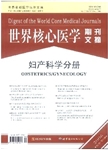宫颈癌结局预测
Predictors of outcomes for women with cervical carcinoma作者机构:Department of Obstetrics and Gynecology Division of Gynecology Oncology University of Alabama at Birmingham 619 19th Street South Birmingham AL 35249-7333 United States
出 版 物:《世界核心医学期刊文摘(妇产科学分册)》 (Core Journal in Obstetrics/Gynecology)
年 卷 期:2006年第2卷第3期
页 面:42-42页
学科分类:1002[医学-临床医学] 100214[医学-肿瘤学] 10[医学]
主 题:晚期宫颈癌 临床病理学 统计学资料 人体试验 生存情况 统计学分析 农村地区 生活质量
摘 要:Background. To determine the impact of race and other factors on the management and outcomes of women treated for cervical cancer in a rural state. Methods. Following IRB approval, a retrospective review identified 434 eligible women treated for cervical cancer from 1994 to 2000. Collected data included: demographics, clinicopathologic data, primary and adjuvant therapy, recurrence, and survival. Statistical analyses were performed with the Chi-square test, Kaplan-Meier method, and Cox regression. Results. 304 (70%) of the women were white and 130 (30%) were non-white. Non-whites were more likely to present with advanced stage disease Stage IIB-IVB (25%vs 13%; P 0.01). Whites were more likely to smoke, be married, be employed, and have private insurance. Non whites were more likely to have medical co-morbidities such as diabetes and hypertension. Although whites with early stage disease were more likely to undergo surgery as their primary therapy than non-whites (93%vs 84%; P 0.01), survival was similar. Survival outcomes for advanced stage disease were similar between groups. Conclusions. Non-whites diagnosed with cervical cancer are more likely to present with advanced stage disease than whites; however, overall survival was similar between groups. Non-whites with early stage disease were more likely to receive primary radiation therapy than whites. The decision to use radiation therapy vs surgery does not appear to have a detrimental effect on overall survival, but may impact quality of life.



